In Viking society, children were molded into warriors and weavers through a blend of play and responsibilities, rather than formal schooling.
Boys were educated in warfare and boat building, while girls learned textile production and household management. Practical skills were ingrained in daily chores, with societal values transmitted through oral traditions.
Toys and games honed critical thinking and combat skills, while storytelling passed down moral and historical lessons. This holistic approach prepared children for adulthood within their communities. Discover more about how Viking education shaped a generation of skilled warriors and weavers.
Viking Children’s Daily Life
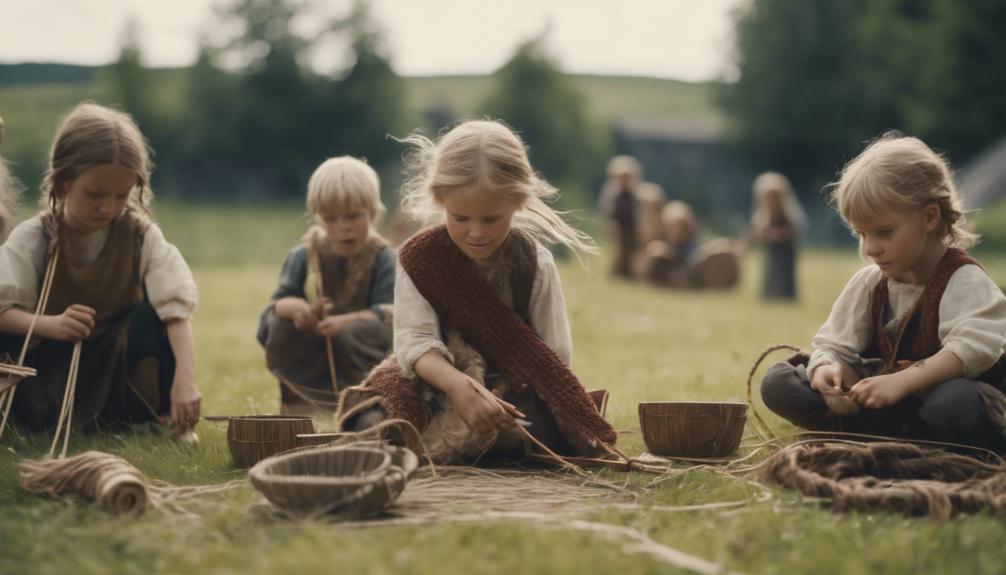
In the daily life of Viking children, a blend of play and responsibilities molded them into proficient warriors and weavers. From the break of dawn until dusk, Viking children engaged in activities that prepared them for their future societal roles. Practical skills like weaving, cooking, combat, and hunting techniques were ingrained in their learning experiences. Societal values were passed down through oral traditions, teaching them the importance of community contribution and survival skills.
Their daily chores were diverse, encompassing tasks such as fishing, hunting, tending to farm animals, and maintaining tools essential for their daily lives. These experiences not only equipped them with necessary skills but also instilled a sense of responsibility and duty. The Viking children’s upbringing focused on a harmonious balance between play and work, ensuring that they were well-rounded individuals capable of thriving in their society. This early exposure to a variety of tasks and responsibilities laid the foundation for their future roles as warriors, weavers, and contributors to Viking communities.
Viking Children Games and Toys
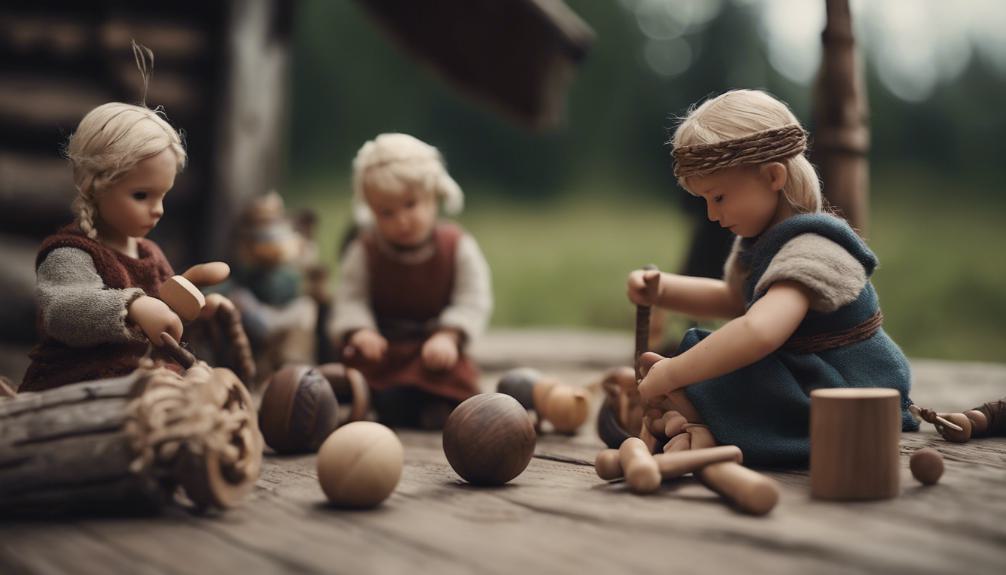
Games and toys were vital elements in the upbringing of Viking children, shaping their skills and understanding of adult responsibilities. Children learned critical thinking through playing board games like Hnefatafl, honing their strategic abilities from a young age.
To prepare for future roles in warfare, Viking children used toy weapons to practice combat skills and gain insights into the ways of battle. Moreover, handmade dolls were crafted to mimic daily activities, imparting knowledge about household management and responsibilities early on.
These toys, typically made from wood, bone, and antler, reflected the natural resources available to the Vikings and provided a holistic approach to education. Through games and toys, Viking children received a thorough education that aimed to prepare them for the adult responsibilities they’d eventually undertake, fostering physical, mental, and social development in a practical and engaging manner.
Viking Children Roles and Responsibilities
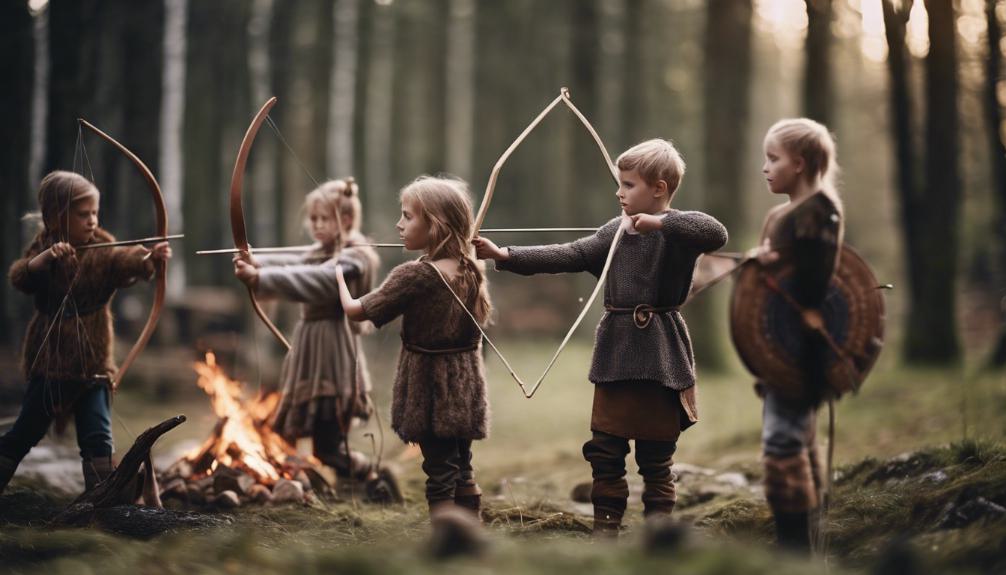
Viking children’s upbringing revolved around instilling practical skills, responsibilities, and readiness for adult life within their community. Boys were educated in warfare, combat skills, boat building, navigation, and weapon making, preparing them for their future roles as warriors and protectors of their people. Girls, on the other hand, learned textile production, weaving, and household management, essential skills for maintaining their households and contributing to the community’s economy.
Both boys and girls had daily responsibilities that included assisting with farm work, learning survival skills, and observing their mothers to understand societal responsibilities. This early exposure to adult roles helped in shaping Viking children’s understanding of the world around them and their future contributions to their society. By actively participating in these tasks and learning from a young age, Viking children were well-prepared to take on the responsibilities of adulthood within their communities.
Viking Children Upbringing and Education
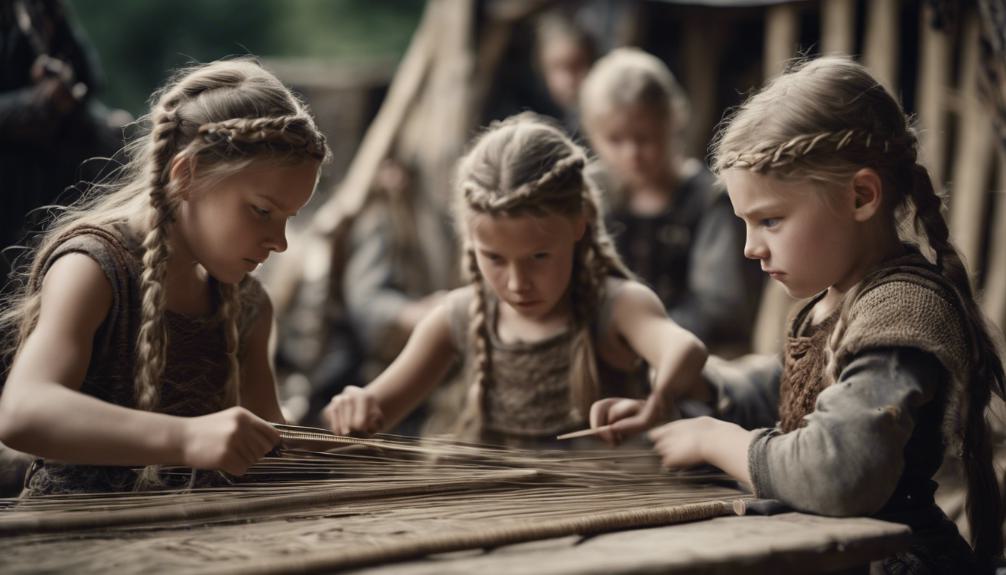
As Viking children grew up learning practical skills and responsibilities tailored to their future roles, their upbringing and education were intricately intertwined with their preparation for adulthood. In Viking society, boys were trained in warfare, navigation, and other skills essential for their roles as warriors and leaders. They learned how to defend their communities, navigate the seas, and uphold the honor of their families.
On the other hand, girls were taught the art of textile production, household management, and other tasks necessary to manage households and support their families. Education in Norse mythology and storytelling was also pivotal for both boys and girls, as it conveyed moral lessons and historical knowledge important for understanding their place in the world.
Practical education was a cornerstone of Viking upbringing, focusing on preparing children for the diverse challenges they’d face as adults in their respective roles within the community.
Viking Children – Key Takeaways
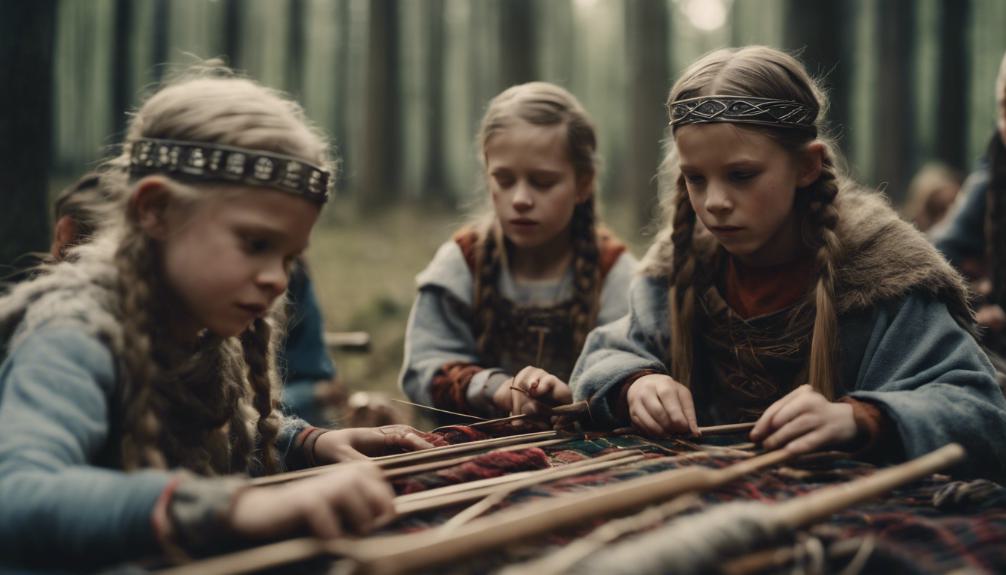
Instructing Viking children in practical skills was foundational to their upbringing, fostering their development for future roles in the community. Young Vikings learned essential skills through daily chores such as fishing, hunting, and tool maintenance.
Play wasn’t just for fun; it was a way for children to mimic adult roles, developing leadership, teamwork, and craftsmanship. Toys like Hnefatafl and toy weapons weren’t just playthings but tools for honing strategic thinking.
Storytelling played an important role in Viking children’s education, with legends and myths imparting moral lessons and historical knowledge. Boys were taught warfare, while girls learned textile production and household management, reflecting the gender roles women held in Viking society.
The education of Viking children started at home, where they absorbed the skills and knowledge necessary for their future roles in Viking life. This holistic approach to educating children offered a well-rounded preparation for their place in the Viking Age community.
Join Over 22 Million Students
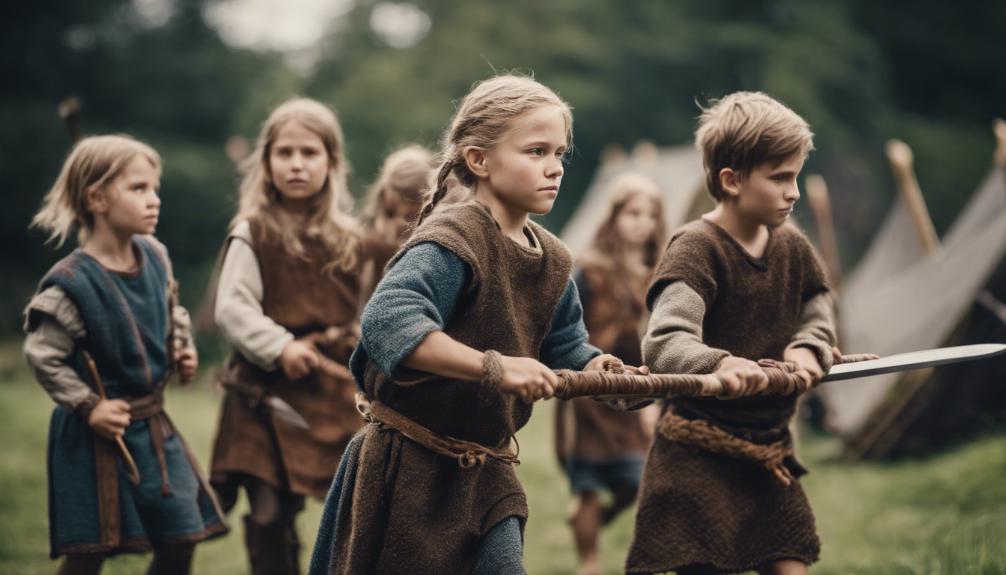
With over 22 million students enrolled, the educational program showcases a diverse and expansive community of learners.
Viking children’s education began at home, where boys were expected to learn warfare, navigation, and trade, while girls would observe textile production and household management.
As they grew older, boys were divided into three groups based on their skills and interests, guaranteeing a focused approach to their training.
Practical tasks, such as storytelling and inscriptions on stones, played a vital role in imparting moral lessons and historical knowledge. This hands-on approach ensured that Viking children were well-prepared for the responsibilities they’d face as adults in their community.
The education system aimed to equip students with the skills, knowledge, and values necessary for the survival and prosperity of their society. Through this unique educational approach, Viking children were able to develop a strong foundation that supported their growth into capable warriors, weavers, and contributors to their community.


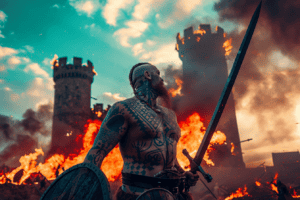
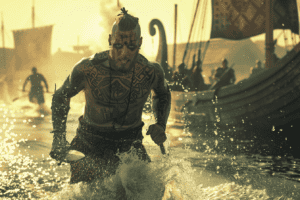






Add Comment